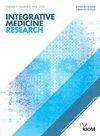使用人工智能开发活证据图:药物穿刺的例子
IF 3
4区 医学
Q2 INTEGRATIVE & COMPLEMENTARY MEDICINE
引用次数: 0
摘要
证据图谱是一种可视化研究现状、识别研究差距和确定研究重点的工具,但它存在文献持续监测负担的局限性。药物穿刺是韩国医学中使用的一种治疗方法,将药物提取物注射到穴位上。本研究旨在开发一个基于人工智能(AI)的自动化系统,用于构建和维护药物穿刺研究领域的活证据地图,并验证其性能。方法利用PubMed API和Gemini AI开发基于web的文献自动检索、选择、数据提取和分类系统。以专家手工评审为标准参照,对9项任务的准确性进行了评价,并对时间效率进行了衡量。利用交互式气泡图实现了一个可视化系统,以提供研究差距识别功能。结果人工智能系统对202篇文章的总体准确率为94.00%(错误率为6.00%),其中90篇文章的详细数据提取。从样本量提取(错误率为0%)到药物穿刺名称提取(错误率为22.22%),在大多数任务中准确率都在90%以上。时间效率提高了68.9%(190分钟vs 59分钟,包括质量控制),表明每日更新实际上是可行的。结论所开发的可视化系统通过直观地识别研究空白,显著改进了现有的静态证据组织方法。基于人工智能的活体证据地图能够在药物穿刺研究领域实现持续的证据监测,具有高精度和显著的时间节省。本文章由计算机程序翻译,如有差异,请以英文原文为准。
Using artificial intelligence for the development of a living evidence map: The pharmacopuncture example
Background
Evidence map is a tool that visualizes the research status to identify research gaps and set priorities, but it has the limitation of the burden of continuous literature monitoring. Pharmacopuncture is a therapeutic modality used in Korean medicine that involves the injection of medicinal extracts into acupoints. This study aimed to develop an artificial intelligence (AI)-based automated system for building and maintaining a living evidence map in the field of pharmacopuncture research and verify its performance.
Methods
A web-based system that automates literature search, selection, data extraction, and classification using PubMed API and Gemini AI was developed. The accuracy of nine tasks was evaluated and time efficiency was measured using manual review by experts as a standard reference. A visualization system using interactive bubble charts was implemented to provide a research gap identification function.
Results
The AI system achieved an overall accuracy of 94.00% (error rate of 6.00%) for 202 articles, including detailed data extraction for 90 articles. Task-specific performance varied from sample size extraction (0% error rate) to pharmacopuncture name extraction (22.22% error rate), with high accuracy of over 90% in most tasks. Time efficiency was improved by 68.9% (190 vs. 59 minutes, including quality control), demonstrating that daily updates are practically feasible.
Conclusions
The developed visualization system significantly improves the existing static evidence organization method by intuitively identifying research gaps. The AI-based living evidence map enables continuous evidence monitoring in the field of pharmacopuncture research with high accuracy and significant time savings.
求助全文
通过发布文献求助,成功后即可免费获取论文全文。
去求助
来源期刊

Integrative Medicine Research
Medicine-Complementary and Alternative Medicine
CiteScore
6.50
自引率
2.90%
发文量
65
审稿时长
12 weeks
期刊介绍:
Integrative Medicine Research (IMR) is a quarterly, peer-reviewed journal focused on scientific research for integrative medicine including traditional medicine (emphasis on acupuncture and herbal medicine), complementary and alternative medicine, and systems medicine. The journal includes papers on basic research, clinical research, methodology, theory, computational analysis and modelling, topical reviews, medical history, education and policy based on physiology, pathology, diagnosis and the systems approach in the field of integrative medicine.
 求助内容:
求助内容: 应助结果提醒方式:
应助结果提醒方式:


